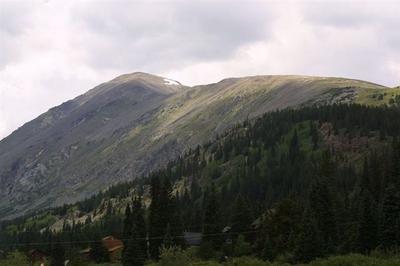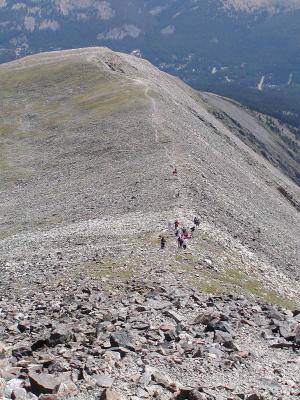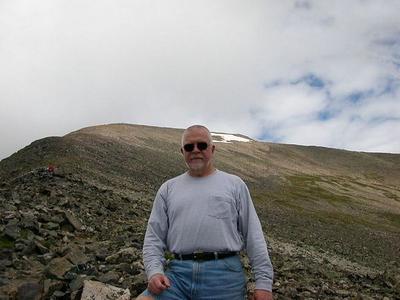It's been 9 years ...
I had been assuming that the last post in this series would be at my ten-year anniversary, which would be in September, 2014. However ...
My experiences prior to, during, and following a unilateral total knee replacement
I had been assuming that the last post in this series would be at my ten-year anniversary, which would be in September, 2014. However ...
Google and I have not been talking very well lately, so I may have missed some of your emails. Sorry about that. I will try to do better.
I am approaching the eight-year post-TKR mark, and continue to have NO issues whatsoever. If I can get the X-rays at the 10 year check-up, I'll post them here.
Today, I had my two year post-op check-up. Yes, it's actually been 2 years, 3 months, and let's see --- 7 days.
The news? I don't need to go back to the surgeon until 2010. Well, the 5 year anniversary is actually 29-Sep-2009, but 3 years from today is ... January, 2010.
OK, enough word play. At the two-year-mark, my TKR is absolutely perfect, as good as it can possibly get. On the X-ray (which I could NOT get digitized to post, btw), there is no sign of osteolysis. Everything is in perfect alignment. No unusual wearing of any of the joint surfaces.
When the doc asked how I was feeling ... I told him that I was working with a trainer every other day; walking 3.5 miles on alternate days; and ... I can kneel and sit on my heels. And so then, I showed him.
I started going to the trainer in May, 2006, simply because I was not being able to restore any kind of bilateral symmetry on my own. After 30+ years of a bad knee, I continued to favor the formerly-bad-leg even after the TKR. I still shifted my weight away from the "bad side", and this was creating some serious posture-related lower back pain. My TKR leg continued to be much smaller and atrophied when compared to my non-TKR leg. I was not making progress on my own --- so I gulped hard, and started going to a trainer on a regular basis.
Eight months later, I am walking 3.5 mi easily --- outdoors, and with significant hills to climb. The calf on my TKR-leg is almost the same size as the other. The quadriceps on the TKR leg are much stronger and very well-defined, however, there are still obvious upper leg diameter and mass differences. This is no longer as striking as it was pre-op, but still exists.
I've lost NO overall body weight. There have been significant muscular shifts though --- my waist is at least 2 or 3 inches smaller, for instance.
And ... there is no need for another check-up until the five year mark.
As always, I will try to respond to your emailed questions within a few days.
For those of you who had been hoping that I would be posting more frequently, my humble apologies. As it does with many of us, life post-TKR has really changed my normal patterns.
For those of you who have emailed me, I hope that I have gotten back to you in time to have been of service. The gmail address bounces twice before it gets to a box that I monitor on a routine basis, and sometimes that path is less than reliable. I do, however, try and check the gmail account directly every month or so.
Now, the update.
It's been just about 22 months since my unilateral (right) TKR. If you've been here before, you know that my experience has been incredibly positive. If not, I encourage you to read your way through the archives --- the whole story is in there. My experience continues to be absolutely positive.
About ten weeks ago, I decided that my post-TKR body was still not balanced or symmetric. 30-plus years of favoring my right knee had created many bad posture and balance habits which I still unconsciously retain. My solution was and is) to go to a personal trainer 3X a week for an hour. 6 AM, MWF. Yes, ouch. And on the "off days", I walk or bike for an hour.
As comfortable as I had been pre-trainer with my TKR, things after 10 weeks of effort are much MUCH better. Flexibility, balance, strength --- all are improved. This enables me to do more, and protect both my knees and my back much better than before.
For example, I've mentioned kneeling in here more than once. "Can you kneel with a TKR?" is a frequent Delphi forum question. Although my experience may be unique, and yes, my TKR is uni, not bi, let me tell you: I CAN KNEEL. We do yoga-type stretching from kneeling positions all the time, and I am able to comfortably go into a yoga "prayer" position. The trainer does not call it that, but it resembles the arms-forward variation of the balasana, or yoga child's pose. I can almost sit on my heels, and can almost put my chest onto my thighs. Interestingly enough, it is no longer my KNEE that limits my flexibility, but my lower back and hips.
What has this done to my daily life? I now garden on my knees, wearing gel-filled knee pads, rather than always sitting (because I was unable to kneel).
I have NO pain, even after extended exercise. I routinely walk 3 to 5 miles at a time, at a fairly fast pace. No pain.
My two-year anniversary is at the end of September, 2006. I expect to be posting a full update at that time.
I would encourage those of you who read this to simply know that with persistence, hard work, a good surgeon, and a good PTist, you will get through the TKR experience. There may be days or weeks when it doesn't seem like it. There will be weeks where the incremental improvement just doesn't seem real. But it will be.
Or at least, that has been my experience.
Welcome! If you are reading this, you've found your way here from either a browser search (looking for TKR information), or from the Delphi "On Our Feet" forum.
This post marks the one-year anniversary of my TKR. Unilateral, right knee only (the left is fine, thank God). My experience has been exceptionally positive, and I certainly recognize how lucky and blessed I am to have an experience this positive. I posted a summary of my TKR experience here: http://greattkr.blogspot.com/2005/05/knee-plus-eight-months-anniversary.html.
Actually, I've been told that my experience is not all that unusual, and that many TKR patients have positive TKR experiences. I am certain that this is true. However, it is human nature to focus on the negatives, and this is also true on the Web. A year ago, it was difficult to find positive TKR information on the Web. Furthermore, it was really easy to find TKR horror stories, and I found enough information to really scare me pre-surgery. I decided that if my TKR went well, I would try to blog about it on a regular basis, just so that there was some detail on-line of a real experience, from beginning through surgery and PT, to the one-year anniversary. That's what this blog is.
My TKR occurred on the morning of 29-September-2004. Please roam through the archives. All of the detail is there. My story actually starts in 1969, with my initial knee injury and old-style ligament and meniscus surgery. I kept a detailed journal of my actual TKR last year, and then posted the journal to this blog. You can read all of my fears (both realized and unfounded). Recognize that I am a scientist --- I included lots of details that may not be for the squeamish.
There are no pictures here except for the ones below from our recent hiking-and-biking vacation post-TKR. You can google pictures of TKR surgeries pretty easily, if you're looking for gore.
I've been asked about continuous-passive-motion machines. The surgeons in the practice I used do not use them unless the patient needs them. I suspect that ultimately, it's an insurance coverage issue. There are recent studies in the literature that indicate that PT without CPM is as effective as PT with CPM. At least, after 6 weeks post-op. What the studies do not tell you is that those 6 weeks of PT without CPM require a tremendous amount of effort on the part of the patient. If you don't (or can't) do the PT, you may not recover as quickly or as fully as someone who did (or can). If you are physically weak, if you tend to develop scar tissue, if you cannot take pain-killers --- talk to your OS about prescribing a CPM for you. It is not a perfect solution: you will still need to work hard at PT. But in some cases, it can help.
I've also been asked --- a lot --- about kneeling. This is a discussion you need to have with your surgeon. Not all TKR devices allow kneeling. Not all TKR recoveries will get to the kneeling stage. Mine did.
What are my current limitations, one year after my TKR? I'm not sure that I have any, except a fear of falling down and whacking my TKR knee. I walk. I hike. I bike. I mow the lawn. I garden, including tilling and kneeling.
I spent last Friday going up and down scaffolding on a Habitat house. I actually was on top of two stories of scaffolding, with my TKR knee bent over the toprail of the scaffolding so that I could lean out, and use both hands to install the framing for a soffit return. A year ago, pre-TKR, I could not have thought about climbing a ladder, let alone hanging from a scaffold.
If you have specific questions, you can email me at the address listed in the sidebar. I can't promise an immediate answer, but I do try to check that mailbox at least once a week.
I will also continue to post to this blog. Each month, the anniversary of my TKR still makes me realize what a tremendous change in my life the TKR has been. Thanks for allowing me to share that with you.
It appears that I've inspired someone! I recently got a note from another TKRer who climbed Mt. Quandary:
Hello Great TKR - I believe we have much in common. I am 58 years old, and had a right TKR in August 2004. ... As with you, my TKR has been highly successful and the operation gave me my life back. My positive and negative experiences were pretty much the same as yours. I have not done the biking to the extent that you have, but have been swimming regularly, and working out at a fitness center since I finished PT. I also avoided the pain meds, worked hard to get in shape before surgery, scared myself when I saw"the bruise," and have had an overall very positive experience.
Here is the ironic part. I climbed to the summit of Mt. Quandary last Sunday (9/18). (My wife and I) went up to Breckenridge where we have friends who had been after us for several years to come out and stay with them. Their house is a few miles north of Breck, quite near the Mt. Quandary trailhead. I was thinking about attempting this mountain when I found your inspiring website and that settled the matter, I had to give it a try. Our friends are in their 70's and my wife is a cancer survivor, so none of them were capable of attempting a fourteener. I did a solo climb. Near the summit pyramid, I met a group of very buff young men and women from a Colorado Springs climbing club. They let the"old guy" tag along with them and helped me over the tough spots near the summit. I kept wondering where all the oxygen went! They gave me a round of applause when I reached the top. Very rewarding. On the way down I took some great pictures of mountain goats (below the saddle).
Your blog site is great. I hope lots of people considering TKR will read it.
There can be no limits to what you can do after a successful TKR. That's been my experience. That's also the experience of the gentlemen who followed me up to the summit of Mt. Quandary: "... the operation gave me my life back." All that I can say is "I agree!"
This is Mt. Quandary, in the Rockies west of Denver. The peak height is 14,265 feet above sea level. 
In early August, about 10 months and a week after my TKR, our extended family took a group of ten people from 10,400 feet (the trailhead) up Mt Quandary to the summit.
I "only" made it to about 13,700 ft. There's a "saddle" on the ridge. I made it across the saddle and about a third of the way up the last push to the summit. 
Here's the view from the other direction, looking down into the valley (at the top of the picture).
This picture was shot by my brother-in-law, looking back down onto the saddle. You can see the saddle in the shot from below. Those "ants" are people, folks. Please note the patch of light colored rocks and the patch of green.
Thi s is me, at about 13,500 ft. You can see the light colored rocks and the green patch behind me. I made it this far, and met the rest of the crew returning from the summit.
s is me, at about 13,500 ft. You can see the light colored rocks and the green patch behind me. I made it this far, and met the rest of the crew returning from the summit.
The hike took 3.5 hrs to the top (or for me, being last in the group, to get to this height). The trip down took 2.5 hrs. All of us live our normal lives at about 1,200 ft. We flew to Denver on a Saturday, and did Quandary on the following Thursday. Breathing was a challenge, and for all of us.
My TKR knee was fine, both up and down. However, all of our calves ached from the return trip.
We also did a 23+ mi bike ride (on Sunday), and a 3 hr hike up a mountain at a lower elevation (on Tuesday). I went into this vacation expecting to have limitations re outdoor activities. I was pleasantly surprised to discover that there were none. My knee did not hold me back --- at all.
This is me at the top of Vail Pass, at about 12,000 ft, just about to ride the bike DOWN from the pass to a town called Frisco, about 15 miles away. After we got to Frisco, my daughter and I pedaled from a additional 8 or 9 mi --- uphill --- from Frisco to the outskirts of Breckenridge. Breck is about 500 ft higher than Frisco, so it was only slightly uphill. But I can assure you, we KNEW that the road was uphill.
I really just wanted you to see the scar on my knee.